When you embark on your journey of shopping for diamond jewelry, you’ll discover a wide array of shapes and sizes available. Amidst these choices, you may not initially realize that many jewelry pieces incorporate small diamonds known as melee diamonds.
These petite diamonds play a crucial role in enhancing the overall beauty of the jewelry piece, particularly the center stone. In this article, we will delve into why these tiny diamonds hold such significance and provide guidance on what to consider when purchasing melees.
Without any delay, let’s explore the world of melee diamonds and their importance in diamond jewelry.
DESIGN YOUR OWN ENGAGEMENT RING: START WITH A SETTING OR START WITH A DIAMOND. IT’S REALLY UP TO YOU!
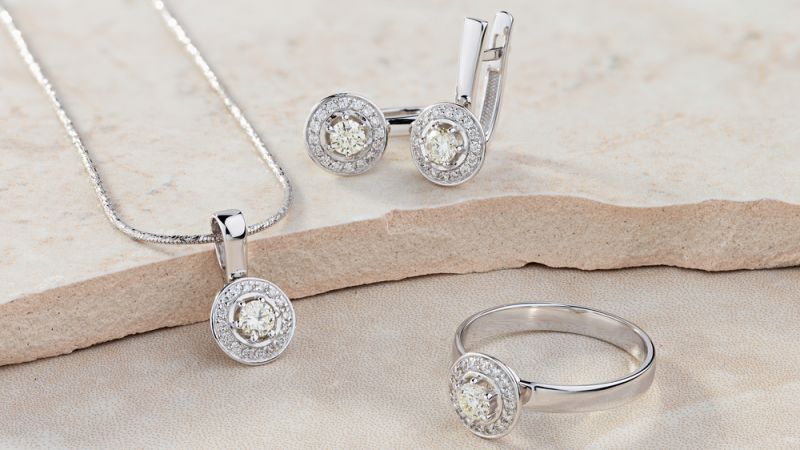
What Are Melee Diamonds?
The term “melee diamonds” refers to small gemstones that are typically too tiny to be used individually in jewelry. Their main purpose is to accentuate larger center gemstones. These petite diamonds are excellent for making the main diamonds stand out and can be used to adorn the sides of larger jewelry pieces.
For example, in some rings, a multitude of small diamonds surrounds the centerpiece, creating a captivating sparkle and enhancing the beauty of the central diamond. Additionally, melee diamonds can be set in a ring without a centerpiece, forming various attractive patterns and shapes.
In certain bridal rings, the entire circumference of the ring is covered with melee diamonds, creating the illusion of an everlasting band where all gemstones are of equal importance. This style of wedding band is highly popular and in high demand.
What Does “Melee” Mean?
The term “melee” originates from French and means “a mixture of diverse elements.” Essentially, it signifies that melee diamonds are often sold in bulk, with numerous small diamonds mixed together.
However, it’s important to note that nowadays, this term can be somewhat misleading since parcels of melee diamonds no longer consist of diverse elements. Instead, they typically contain standardized gems of similar quality.
Are Melee Diamonds Real Diamonds?
A common question among diamond buyers is whether these tiny chips are genuine diamonds. Given their small size, it’s a valid inquiry.
While it’s true that sellers don’t usually provide specific details about the cut, carat weight, color, and clarity of melee diamonds like they do for larger center diamonds, it doesn’t mean that melee diamonds are fake. The absence of detailed specifications is mainly due to the practicality and economics of dealing with such small gemstones.
Grading these minute diamonds would be time-consuming and costly, resulting in an unreasonable increase in their final price. As a result, melee diamonds are typically sold and purchased in large parcels of similar quality.
It’s important to note that some vendors may use melee diamonds of varying quality, which can pose challenges for consumers. Unethical jewelry vendors may deceive customers about the quality of their melee diamonds. To avoid such situations, it is advisable to conduct business only with reputable and trustworthy jewelry vendors.
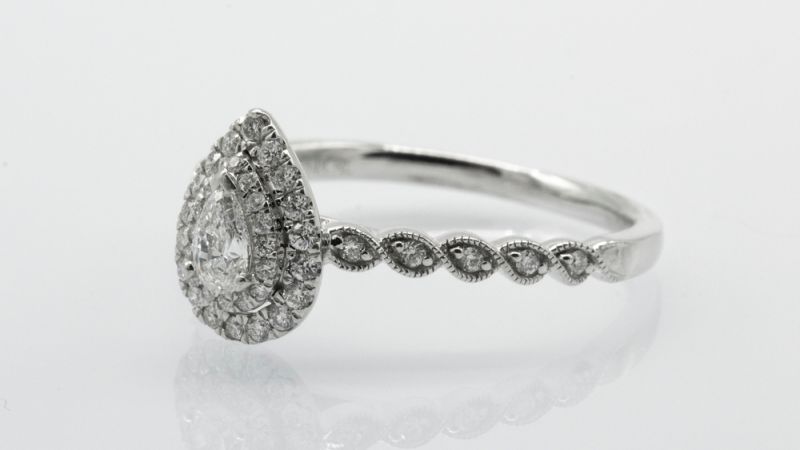
Melee Diamond Prices
Similar to larger diamonds, the price of melee diamonds is determined by the quality of the cut and the stone’s size. However, due to their smaller size, melee diamonds do not possess significant individual value.
Melee diamonds are seldom sold individually or in the retail market. Instead, they are typically bundled in parcels containing dozens of small stones and sold wholesale. The price of melee diamonds is calculated based on the total carat weight of the parcel, rather than for each individual gem.
On average, melee diamonds with a standard grade cost between $300 and $400 per carat. However, higher-grade gems with qualities such as VVS clarity and color higher than H may fetch prices of up to $1000 per carat.
Sizes of Melee Diamonds
The size of melee diamonds can vary considerably. The smallest ones are less than a millimeter in diameter, while the largest melee gems can reach close to 4 millimeters in diameter.
Naturally, larger melee diamonds are more expensive, but smaller ones also have their uses. They can be employed to create exquisite vintage, pave, or designer settings when used appropriately.
To provide further clarity, we have included a comprehensive table displaying the corresponding size and weight of various melee diamonds:
| Carat Weight | Minimum Diameter | Maximum Diameter |
|---|---|---|
| 0.001 carat | 0.97 mm | 0.99 mm |
| 0.005 carats | 1.00 mm | 1.15 mm |
| 0.0075 carats | 1.16 mm | 1.23 mm |
| 0.01 carat | 1.24 mm | 1.40 mm |
| 0.02 carat | 1.56 mm | 1.80 mm |
| 0.03 carat | 1.89 mm | 2.10 mm |
| 0.04 carat | 2.11 mm | 2.23 mm |
| 0.05 carat | 2.24 mm | 2.43 mm |
| 0.10 carat | 2.81 mm | 3.10 mm |
| 0.15 carat | 3.24 mm | 3.54 mm |

Types Of Melee Diamonds
When discussing types of melee diamonds, the primary distinction is based on their cutting style. Similar to larger diamonds, melee diamonds can be categorized as either single-cut or full-cut.
Single-Cut vs. Full-Cut Melee Diamonds
A single-cut melee diamond consists of 16 facets, with eight on the crown and six on the pavilion, resembling a larger single-cut diamond.
In contrast, full-cut diamonds feature a minimum of 57 facets. Single-cut melee diamonds are relatively rare these days, as the full cut is the preferred option.
In the past, single-cut was the only feasible way to cut melee diamonds due to their small size. Today, while you can still find single-cut melee diamonds, they are primarily utilized in the high-end Swiss watches industry, where they hold significant value.
Full-cut melee diamonds account for approximately 99% of all melee diamonds used in jewelry. This is because melee diamonds are no longer cut by hand; specialized machines handle the cutting process.
Different Shapes of Melee Diamonds
Although many people associate melee diamonds exclusively with the round shape, melee diamonds actually come in various shapes.
Here are some of the most common melee diamond shapes:
- Small Round Melee Diamonds: The classic shape and the most prevalent one. These diamonds have numerous accent uses, whether in a halo or pave setting, among others.
- Princess-Cut Melee Diamonds: Sometimes, you’ll find small square-shaped melee diamonds in jewelry, lending a modern appearance.
- Tapered Baguette Melee Diamonds: These unique trapezoid-shaped diamonds are ideal for following the curve of a jewelry piece. They work well in three-stone or side stone settings.
- Straight Baguette Melee Diamonds: Similar to the previous shape, straight baguettes are nearly perfectly rectangular. These melees are used as accents to provide symmetry and appear more prominent than their actual size.
- Trillion Cut Melee Diamonds: With their triangular shape, these tiny diamonds serve as excellent complimentary stones. They draw attention to the centerpiece stone without overpowering it.
How to Choose Melee Diamonds
Since specific details such as cut, carat, color, and clarity are typically not provided for melee diamonds, there are three main factors to consider when selecting jewelry with melee diamonds:
- Vendor Reputation: It is crucial to purchase from a trusted vendor with a solid reputation. Ensure that the diamond descriptions are accurate and that you are not being deceived.
- Design and Visual Appearance: Accent stones should be arranged and designed in a way that highlights the centerpiece stone without overshadowing it.
- Overall Cost: If the price of the jewelry piece seems too good to be true, it may not feature genuine diamonds and could instead use substitutes like cubic zirconia. Verify that the price aligns with typical melee diamond prices.
Additionally, ensure that the jewelry piece is of high quality to prevent melee diamonds from falling out. Ultimately, personal preference plays a significant role. If you are drawn to a piece of jewelry with more prominent accents or without a center diamond, you have the freedom to make that choice.
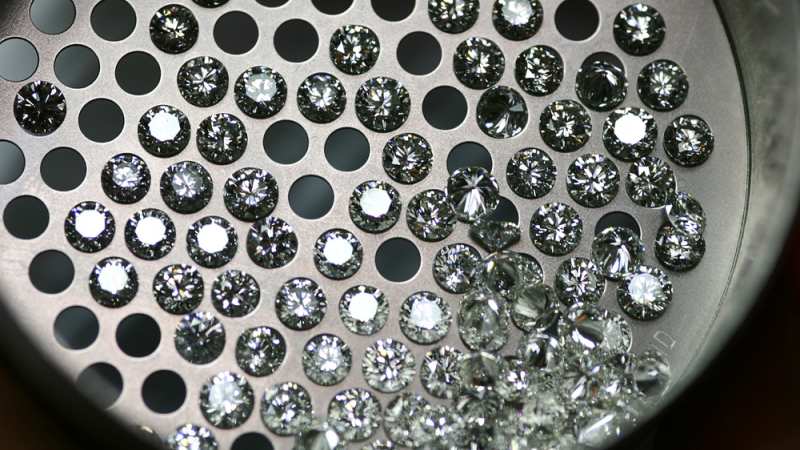
Popular Engagement Ring Settings That Feature Melees
Melee diamonds find various applications in different types of jewelry. However, when it comes to engagement rings, specific settings make optimal use of melees:
- Halo Setting:
The halo setting is a clever and cost-effective ring setting where melees are arranged in a halo around the larger center stone. This arrangement creates the illusion of a more prominent centerpiece while keeping the price affordable. The melees in the halo setting enhance the overall beauty of the ring, accentuating the brilliance of the diamond. - Pave Setting:
The pave setting serves a purely decorative purpose. In this setting, melees line the shank of the ring, making the entire band more eye-catching and adding brightness. It transforms the ring into a stunning piece of jewelry, emphasizing the beauty of the entire ensemble rather than just the center stone. - Side Stone Setting:
Similar to the pave setting, the side stone setting features several larger melees that continue down the shank of the ring in a straight line. This setting differs from the pave setting, which typically consists of multiple parallel lines of smaller melees. The side stone setting adds elegance and sophistication to the ring, enhancing its overall appearance. - Three Stone Setting:
In a three stone setting, two sizable melee diamonds are placed on either side of the center stone. This simple and clean design showcases only three diamonds in total. However, when the gems are of high quality and well-designed, the three stone setting can create a captivating and visually appealing ring.
These different settings utilize melees in engagement rings to maximize their impact, enhance the overall beauty of the ring, and create stunning compositions that draw attention to the center stone.
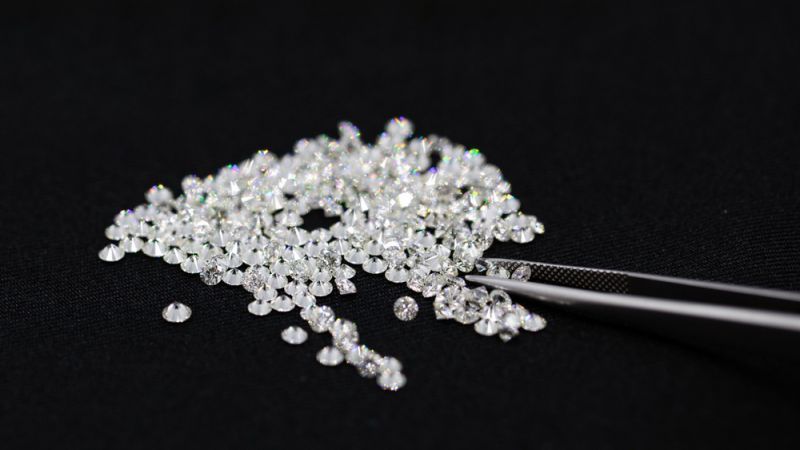
Taking Care Of Melee Diamonds
When choosing an engagement ring with melee diamonds, it’s important to be aware of a potential downside: over time, these small gemstones can become dislodged or loose due to regular wear and tear.
To prevent this, it’s crucial to take proper care of the ring. Regularly visit a professional jeweler to have the ring inspected for any loose diamonds and ensure the overall integrity of the setting. Additionally, melee diamonds have more intricate settings with small crevices where dirt can accumulate.
It is advisable to avoid using ultrasonic cleaners, as the vibrations can potentially loosen the melees. Instead, opt for a mild liquid soap, water, and a soft brush to gently clean the ring and remove any dirt or grime from the setting.
By maintaining the ring’s integrity and keeping it clean, you can minimize the risk of losing or damaging the melee diamonds over time.
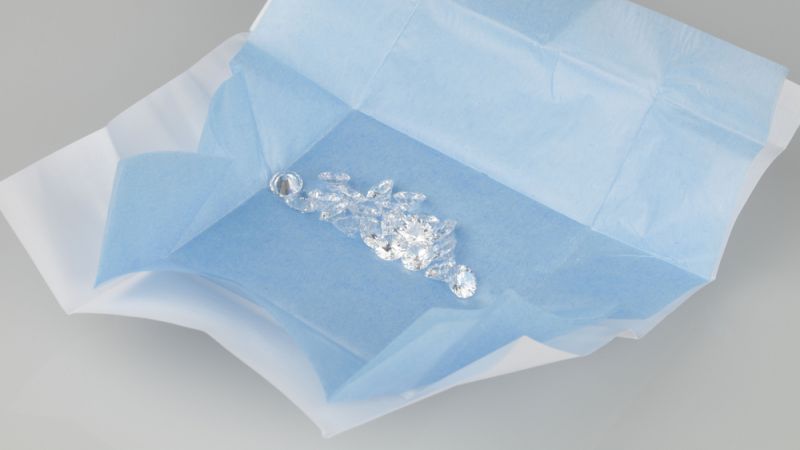
Bottom Line
We hope that our discussion has helped you gain a deeper appreciation for melee diamonds, highlighting why they deserve more recognition and admiration than they typically receive.
While these small gemstones may be less expensive and initially less striking than their larger counterparts, they play a crucial role in enhancing the beauty of every jewelry piece they adorn.
Melee accent diamonds have the power to transform a plain ring into a sparkling masterpiece. They can also breathe new life into smaller diamonds, making them shine with a renewed brilliance. When arranged in exquisite patterns, melees have the ability to steal the spotlight and captivate the eye.
However, it is important to exercise caution when purchasing melee diamonds. Always assess their quality and ensure you buy from reputable and trustworthy vendors. This way, you can be confident in the authenticity and value of your melee diamonds, further enhancing your overall jewelry experience.


